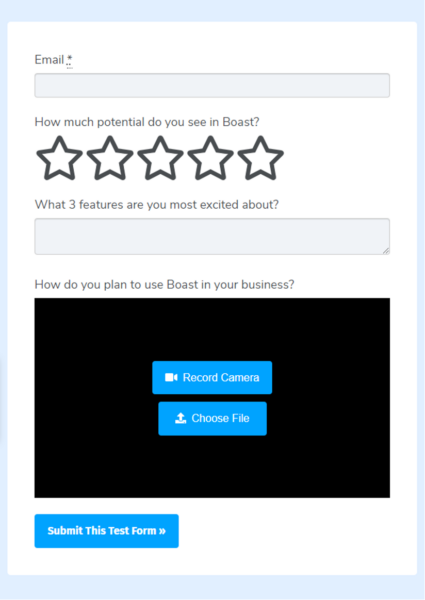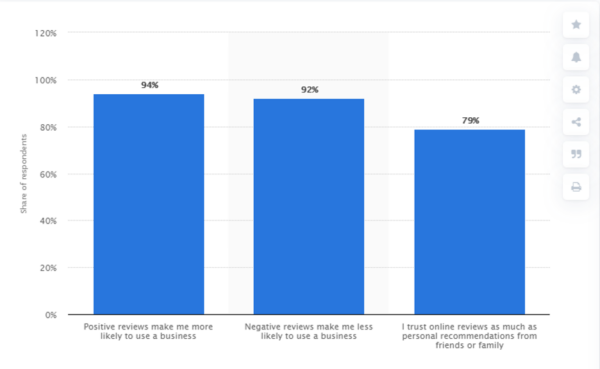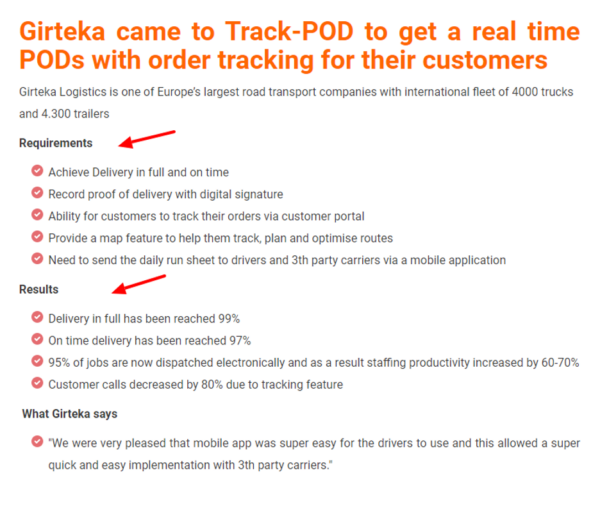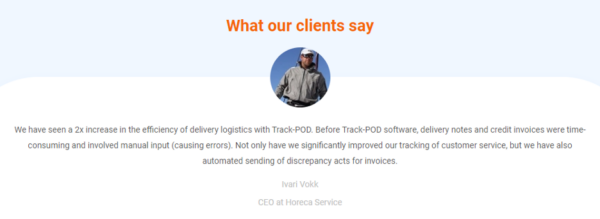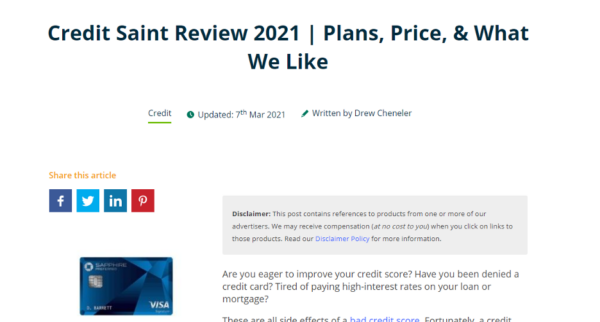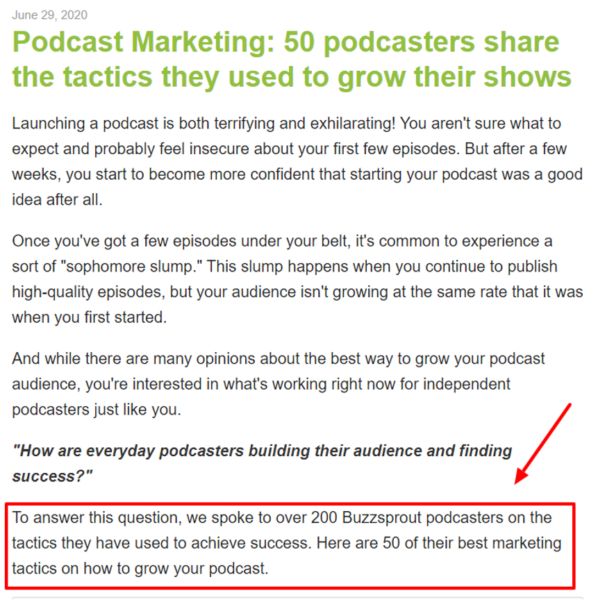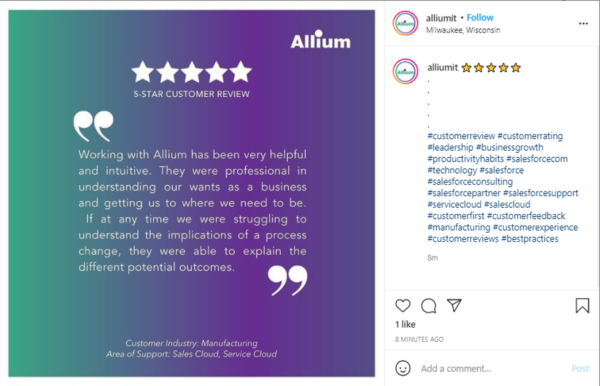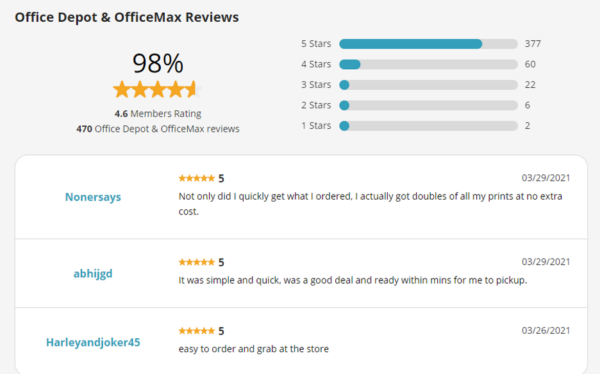94% of respondents from a recent survey said that positive reviews made them more likely to use a business, while 92% said that negative reviews made them less likely to patronize a local business.
In other words, reviews can quite literally make or break your business.
But, how do you keep up with positive and negative reviews, and how can you use them to benefit your marketing strategy?
In this article, we’ll explain all of that and more. By the end of this article, you’ll understand how to streamline the review process and how to integrate it into your marketing strategy.
First, a few housekeeping duties
Before you start integrating customer reviews into your marketing content, let’s explore how to streamline the review process:
Automate/Simplify the review process
One of the best ways to collect testimonials is by simplifying and automating the review process. Customers are super busy as it is — to encourage them to leave a review, you’ll need to make it as painless as possible.
Here are a couple of examples:
- Embed easy-to-fill-in testimonial templates on your website, landing pages, and social media.
- Offer time-bound incentives in exchange for a review. For instance, when you send a customer to their post-purchase confirmation page, you can say something like: “Thanks for placing your order. Interested in saving $5 off your next purchase? Click this link to leave a review, and we’ll send you a $5 gift card!”
The more you can automate this process, the more efficient review collecting will be for both you and the customer.
Monitor review websites
Keeping an eye on review websites (like Google Business or Yelp) is one of the best ways to collect positive reviews without breaking a sweat. It’s also essential to stopping back-to-back negative reviews.
To navigate this process, it’s important to respond to every review — positive or negative.
For instance, when responding to positive reviews, you can say something like: “Hi Linda, thanks so much for your kind words — we appreciate having you as a customer! Please reach out if there’s anything we can do to make your experience even better.”
When you’re responding to negative reviews, it’s important to address the customer’s concern politely and respectfully, then find a solution to their problem. For example, you can say something like, “Hi Matt, we’re really sorry you’re struggling with ___. We’re happy to clear up the confusion and rectify this on our end. How can we reach you in order to provide the best solution possible?”
When responding to comments, complaints, and reviews, don’t stop at review sites. Make sure to do this on your social media channels, blog posts, and anywhere else you have content. To make this easier, you can use a listening tool, like Google Alerts or Social Mention, to monitor your online reputation.
Gather a variety of reviews
When repurposing reviews for marketing content, it’s important to collect reviews in a variety of formats like:
- Videos
- Reels
- Text
- Photo
- Audio
- Case studies
We’ll explain how and where to use these formats in a bit.
Feature different target customers
The best testimonials feature people of different ages, backgrounds, genders, and ethnicities. That’s why it’s crucial to represent your customer base accurately and appeal to prospects by featuring different target customers in your testimonials. Consumers prefer testimonials from people like them.
Integrate reviews into your marketing process
Collecting and publishing reviews should be an integral part of your marketing process. For example, if Sundays are social media planning days and Wednesdays are webinar planning days, reviews should be included in those processes.
7 places to integrate customer reviews as part of your content marketing strategy
Once you’ve collected a few types of reviews, here are seven places you can integrate them:
1. Email campaigns
Including reviews in emails gives you the chance to nurture leads, share compelling stories, and potentially convince email subscribers who are on the fence to give you a shot.
You can include reviews in your:
- Promotional emails
- Lead nurturing emails
- Email newsletters
Here are two ways to embed customer reviews in your email campaigns:
Tell a compelling story:
Has your product or service significantly changed someone’s life for the better? Turn that experience into an emotionally captivating story. Include plenty of quotes from the customer or ask the customer to write the story themselves. Include visual aids like before and after pictures or videos wherever possible. When telling stories, make sure to be as authentic and honest as possible. Readers can feel when a review sounds off or dishonest.
Feature a customer as a case study:
Featuring happy customers as case studies is a great way to provide proof that people are satisfied with your offerings. When formulating case studies, it’s important to provide as many hard facts as possible. For example, how exactly did your offer or brand benefit them? Did their sales double in just a month? Did you save them a significant amount of time or money?
Be sure to also include a list of their requirements or pain points and a list of their exact results, like this:
2. Website
When people visit your site, you need to give them a reason to stay. Featuring testimonials on your website is an easy way to showcase how your brand impacts customers while simultaneously lowering your bounce rate.
There are endless ways to feature reviews on your website — don’t be afraid to get creative!
Here are some ideas.
Include a large testimonial banner at the top of your website:
Add photo reviews at the bottom of your website:
Adding a photo of your customer along with their testimonial is a great way to show website viewers that your testimonials are authentic. Also, putting a face to a name helps customers feel what it’s like to be in your customer’s shoes.
You can also scatter testimonials on your product/service description pages, contact page, about page, and throughout your website.
3. Blog posts
Blog post articles are the perfect canvas for testimonials. Here are some ways to include customer reviews in your blog posts.
Feature a guest spotlight:
A guest spotlight involves having one of your happy customers write an entire blog post about how your product or service benefits their life. These long-form customer blog posts show readers that customers love your brand so much that they’re willing to be brand ambassadors. When asking customers to write articles, be clear about what you’d like to see.
For instance, do you want them to list 10 ways your offer has benefited them? Do you want them to tell a story? With a little guidance, customers will have the tools they need to compile a successful article.
Another approach to blog posts is to demonstrate to your readers that you understand their needs as the customer. For example, StuDocu, a platform for students to share study documents, has a blog completely dedicated to their audience – written by their audience.
Turn a review into a full-blown article:
Instead of asking for a short two or three sentence review, consider asking one of your best customers if they can write an article.
To set your customer up for success, consider providing them with an outline or some kind of guide. For instance, the customer can cover available plans, prices, and benefits, or they can cover a list of features, pros, and a few tips. Giving your customer a framework will help them structure their article in the best way possible.
Gather a group of your happiest customers and have them write an advice article:
In the above example, Buzzsprout spoke to more than 200 of their podcast customers and gathered 50 of their best marketing tactics.
When reaching out to a pool of customers, be clear about what they’ll need to contribute, how many people you’re reaching out to, and what your goal is.
Would you like them to share time-saving tips when using your product or service? Would you like them to share how to get the most out of your products and services? Be upfront about what you need so they can provide appropriate feedback.
4. Social media channels
More than 3.6 billion people were using social media worldwide in 2020 — a number that’s projected to increase to nearly 4.41 billion in 2025. This makes social media the perfect spot to showcase customer testimonials.
Try to show off your glowing reviews in the following ways.
Ask your customers to record reels:
A reel is a compilation of short videos that usually totals less than a minute in length. Oftentimes, reels are humorous or informative. They work well on Instagram and TikTok.
Turn a testimonial into a custom text graphic:
Custom graphics are perfect for highlighting reviews. Even just adding a simple, colorful background and pairing it with text is enough to grab your audience’s attention. Text graphics work great on Instagram, Facebook, and Pinterest.
Use a collection of story templates:
Social media users love viewing stories to get a behind-the-scenes look at brands. Use story templates to highlight a selection of testimonials on your Instagram and Facebook stories.
Post video testimonials:
Video testimonials add an extra element of authenticity, persuasiveness, and personality, making them the ideal choice when trying to persuade your audience to take action. To get the most out of video testimonials, make sure your customers are sharing their stories in their own words.
Video testimonials work well on YouTube, Facebook, and IGTV.
5. Landing pages
Landing pages focus on a single conversion goal like getting someone to start a free trial or join an email list. This makes landing pages an ideal spot for customer reviews.
When trying to decide what testimonials to add to your landing pages, focus on the specific conversion goal. For instance, if your conversion goal is to encourage viewers to start a free trial, include testimonials about trial users who eventually committed to paid plans. Or, if your conversion goal is to get more signups for an upcoming webinar, include testimonials about how happy your previous webinar attendees were and how they got value from your event.
To draw people to testimonials on your landing pages, consider using videos, photo testimonials, or infographics with stars and graphs, like this one:
It’s also important to use clean landing page layouts so viewers can focus on key information around your offers and testimonials.
6. Podcasts
Collecting and showcasing listener testimonials is becoming essential. Podcasting has become increasingly popular in the U.S., with an estimated 88 million podcast listeners in 2019 and a projection to surpass 160 million in 2023. That’s an increase of around 20 million per year.
Here are some ways to integrate testimonials in your podcast episodes:
- Hook podcast listeners in the first 60 seconds with a value proposition and a testimonial.
- Ask your best customers to guest host a few episodes and share why they love your offers.
- Feature different target customer testimonials in themed episodes.
- Book guest speakers who are willing to try your product/service and discuss their experience.
- Close your episodes with a testimonial and a call to action.
7. Paid ads
Take your testimonial marketing to the next level by promoting your best reviews as paid ads in your retargeting campaigns. To discover which ads work best, consider conducting A/B testing. A/B testing is a way to compare two versions of an ad or post to see which performs better.
When performing A/B testing, focus on one variant at a time (i.e., use a different caption for each ad rather than using a different caption and a different photo for each). Focusing on one variant at a time helps you receive more accurate results.
Conclusion
Integrating customer reviews in your content marketing strategy is a fantastic way to build brand authority, social proof, and trust with your customers and prospects.
Key takeaway: Automate the process as much as possible, focus on authenticity, gather a variety of reviews, and get creative when repurposing testimonials for marketing channels.
Craving more business and marketing resources? Download my company’s whitepaper ‘Publish or Perish: A CMO Roadmap for Managing, Systematizing, and Optimizing the Marketing Content Supply Chain.’
